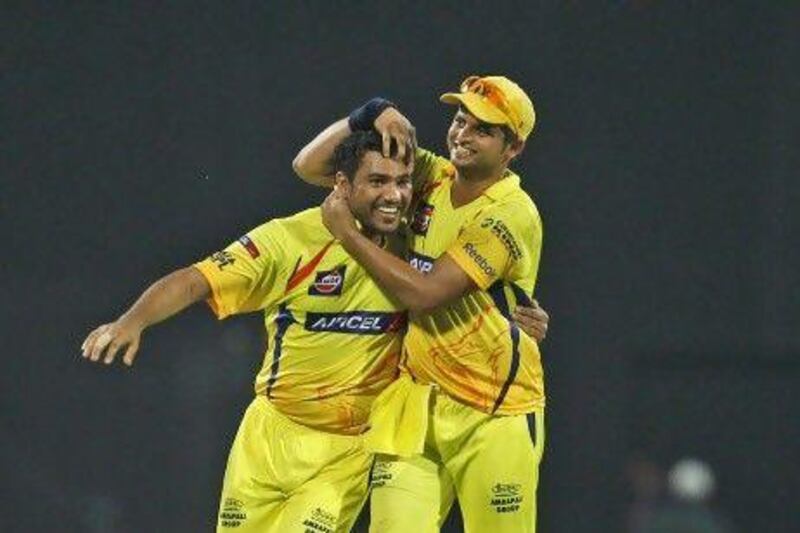The man who created it is in exile, and faces legal bills of €1.5 million (Dh7.35m) after losing a libel case. One of the most high-profile team owners presides over a business empire that is estimated to be 200 billion Rupees (Dh14.44bn) in the red.
The player who sells the most replica shirts by a distance is struggling with a toe injury.
One of the franchises that played last season will not be seen this year. And with the tournament due to start on Wednesday night, more than 20 per cent of the broadcaster's advertising inventory remains unsold.
When the Chennai Super Kings, the champions, and the Mumbai Indians start the fifth season of the Indian Premier League (IPL) in front of fervent support at Chepauk, Lalit Modi's courtroom woes and Vijay Mallya's financial meltdown will recede into the background.
Sachin Tendulkar, who was in London last week to have his big toe seen to, may yet play, but after one underwhelming season in the aftermath of the 2011 World Cup, it is clear the league faces huge challenges.
Some of the problems from the fourth season linger on. The Kochi Tuskers Kerala lasted just 14 games and are now seeking legal redress after being expelled.
Fans continue to struggle with loyalty issues, especially once most of the teams were reconstituted after three years. The auction this February merely illustrated how overpriced Indian talent is, with Ravindra Jadeja fetching US$2m (Dh7.3m) from the Super Kings.
Vinay Kumar, who was not retained by the Royal Challengers Bangalore last year, was brought back at a cost of $1m. Neither has made much impact at international level, but with four Indians guaranteed their places in every playing XI, there just isn't enough quality to go around.
There is little doubt it has benefited players such as Suresh Raina and R Ashwin in the limited-overs arena.
Others like Virat Kohli have also spoken of the positive benefits of playing alongside stalwarts, Indian and international. But the once-stated aim of finding new talent and increasing Indian bench strength remains a pipe dream.
Kohli, Raina and Ashwin were identified as ones for the future long before the IPL was conceived. After taking nine wickets on his Test debut in Delhi last November, Ashwin bristled at the suggestion that he was where he was because of his Super Kings exploits.
"Why don't you talk about all the first-class matches I played?" he asked.
As for bench strength, India continue to perform miserably in Twenty20 cricket.
The World Twenty20 win of 2007 may have accelerated the advent of the IPL, but since then they have done nothing at the highest level. This season, they lost four of their six T20 internationals.
The support too has been uneven. Chennai and Bangalore often boast packed stands, but the same can't be said of Mohali or Hyderabad.
Last season, there were frequent complaints of tickets being overpriced.
Organisers then blamed cricket fatigue - the World Cup had lasted six weeks and India's victory left millions emotionally and financially spent - and will hope that the absence of any big-ticket series in India until November will mean a big throng at the stadiums.
With several short-term signings in the fray, the main challenge will again lie in building a fan base.
The first and third seasons featured plenty of casual fans, those eager to be seen at a "happening" event in town.
Now that it's no longer the flavour of the month, the IPL needs to reach out to the hard core fans, the ones who will keep coming back for more.
No matter how much hype or money you throw at it, no league can thrive without them.
Follow us
[ @SprtNationalUAE ]
& Dileep Premachandran
[ @SpiceBoxofEarth ]





